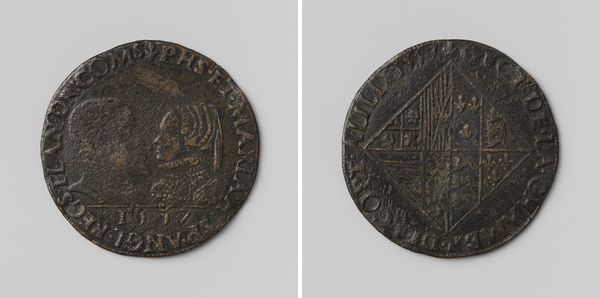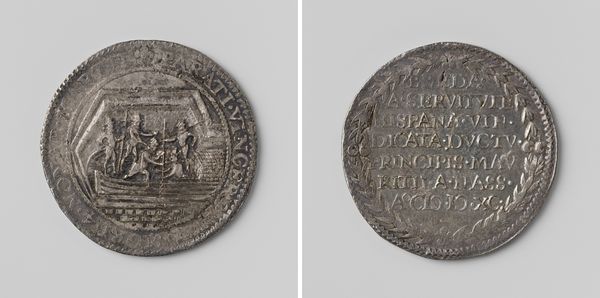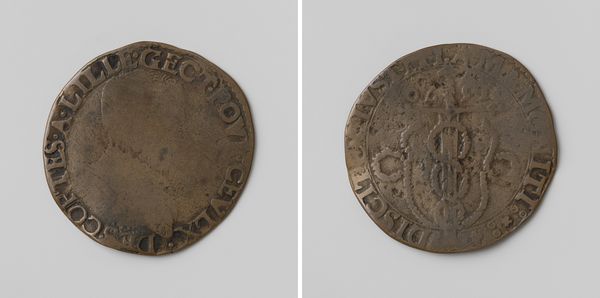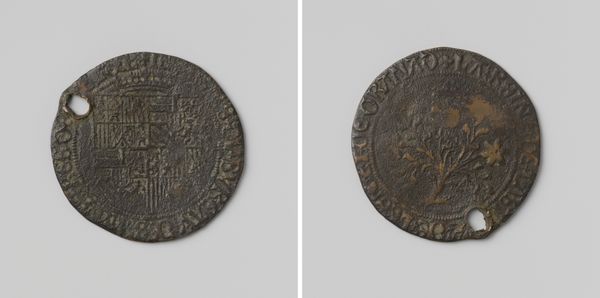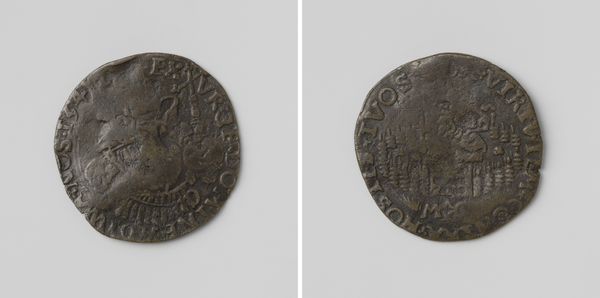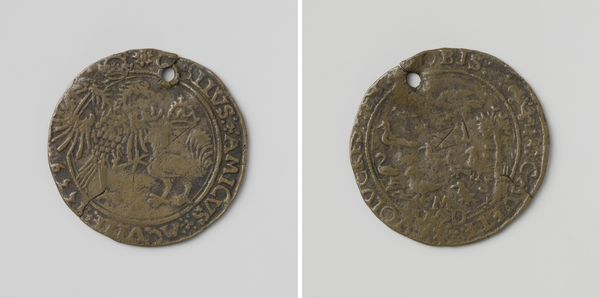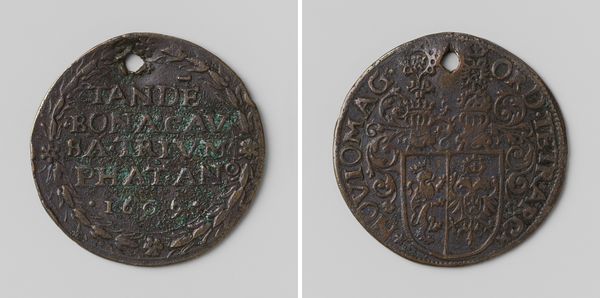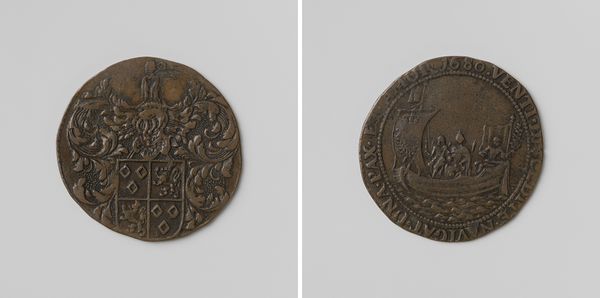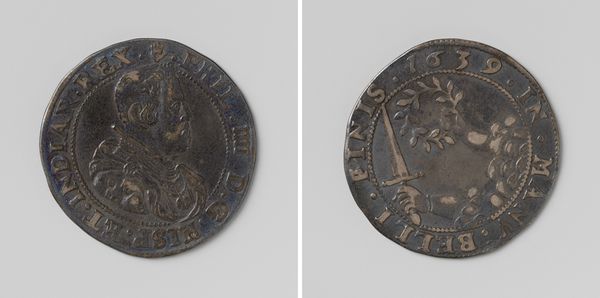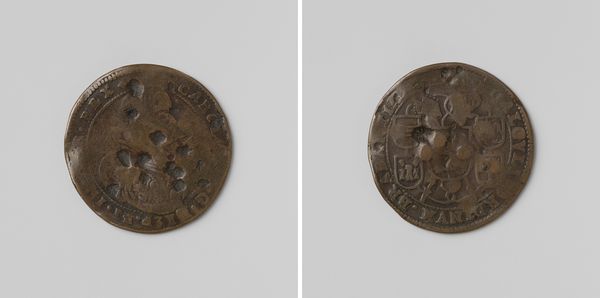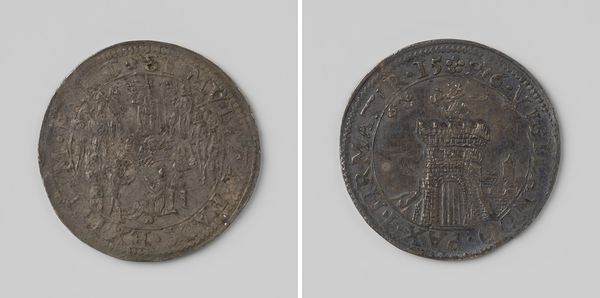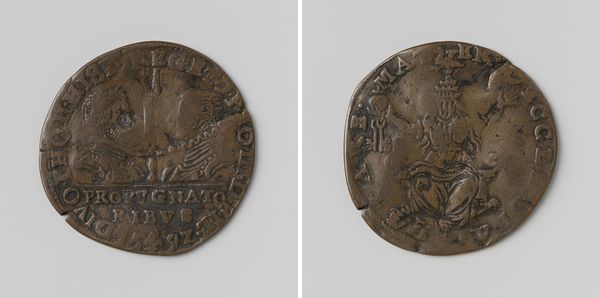
metal, intaglio, sculpture
#
portrait
#
metal
#
intaglio
#
sculpture
#
11_renaissance
#
sculpture
Dimensions: diameter 2.9 cm, weight 4.15 gr
Copyright: Rijks Museum: Open Domain
Curator: This is an intaglio from 1555, found here at the Rijksmuseum, it depicts Philip, the heir apparent of Spain and Lord of the Netherlands. Editor: My first thought is of how easily it fits into the palm of one’s hand. It feels less like a monumental royal portrait and more like something personal and pocket-sized. What can you tell me about the function of objects like these? Curator: Objects such as this served multifaceted roles. Obviously, there was the function of personal display and allegiance—a signifier of one’s connection to power. Given its modest size, it’s tempting to speculate that this particular one had a purpose of more intimate value—to be touched, handled and displayed in domestic setting, a simulacrum for its owner’s aspirations and affiliations with power and status. Editor: Exactly! You can really see how art served as both propaganda and personal expression. As a token of royal status and inheritance, what’s communicated through this symbolic language? What did Philip want his court—and us—to know about him? Curator: What is interesting is the context in which this piece would have been circulated. The turbulent political moment in which this medallion was created, the circulation of such imagery had immediate social implications as symbols of imperial strength and a constant, portable reminder of dynastic ambitions during an age of upheaval. How do you interpret its visual message? Editor: Seeing a monarchical figure struck into a small metal medallion inevitably brings to mind questions about wealth, labour and privilege. Objects like these existed in contrast to the widespread economic struggles in much of Europe. Their existence becomes more loaded when viewed through that lens. Curator: The Renaissance was all about wealth, labour and privilege! We are also dealing with symbols that could carry many meanings; but it cannot be denied that its most straightforward function was always as propaganda. But what I really want to highlight is how pieces like these reveal the extent to which art can function simultaneously within complex political and cultural milieus. Editor: I agree, which gives us a potent symbol for exploring and questioning societal power structures!
Comments
No comments
Be the first to comment and join the conversation on the ultimate creative platform.
